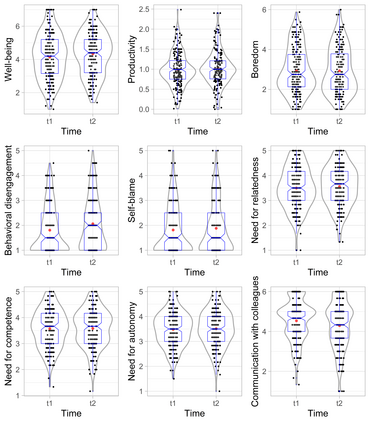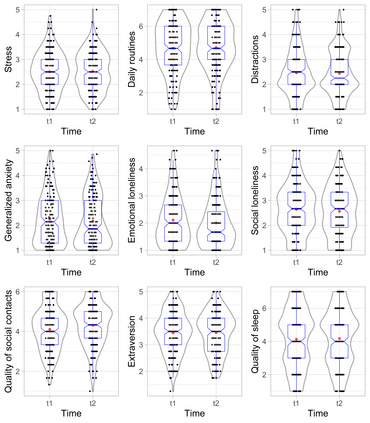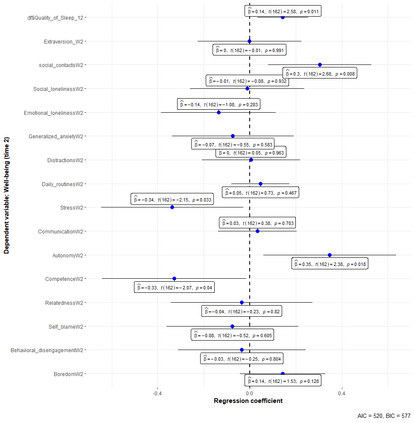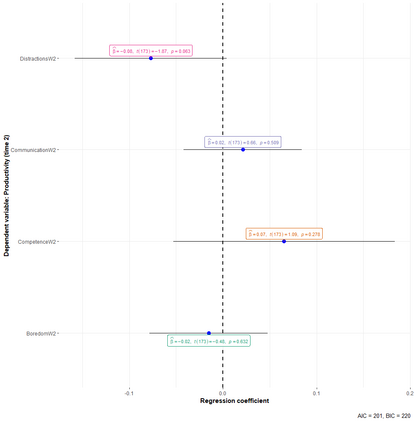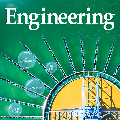The COVID-19 pandemic has forced governments worldwide to impose movement restrictions on their citizens. Although critical to reducing the virus' reproduction rate, these restrictions come with far-reaching social and economic consequences. In this paper, we investigate the impact of these restrictions on an individual level among software engineers currently working from home. Although software professionals are accustomed to working with digital tools, but not all of them remotely, in their day-to-day work, the abrupt and enforced work-from-home context has resulted in an unprecedented scenario for the software engineering community. In a two-wave longitudinal study (N=192), we covered over 50 psychological, social, situational, and physiological factors that have previously been associated with well-being or productivity. Examples include anxiety, distractions, psychological and physical needs, office set-up, stress, and work motivation. This design allowed us to identify those variables that explain unique variance in well-being and productivity. Results include (1) the quality of social contacts predicted positively, and stress predicted an individual's well-being negatively when controlling for other variables consistently across both waves; (2) boredom and distractions predicted productivity negatively; (3) productivity was less strongly associated with all predictor variables at time two compared to time one, suggesting that software engineers adapted to the lockdown situation over time; and (4) the longitudinal study did not provide evidence that any predictor variable causal explained variance in well-being and productivity. Our study can assess the effectiveness of current work-from-home and general well-being and productivity support guidelines and provide tailored insights for software professionals.
翻译:COVID-19大流行迫使全世界各国政府对其公民实行行动限制。虽然这些限制对于降低病毒的生殖率至关重要,但具有深远的社会和经济后果。在本文件中,我们调查了这些限制对目前在家工作的软件工程师个人层面的影响。虽然软件专业人员习惯于使用数字工具,但并非所有他们都是远程工作,在日常工作中,突然和强制的从家到家的工作环境导致软件工程界出现了前所未有的情景。在两波纵向研究(N=192)中,我们覆盖了50多种以前与福祉或生产力有关的心理、社会、状况和生理因素。例如焦虑、分散注意力、心理和身体需求、办公室设置、压力和工作动机。这一设计使我们得以查明那些解释福祉和生产力差异独特差异的变量。结果包括:(1) 预测的社会联系质量是积极的,压力预测了个人在控制两个波浪的其他变量时的健康状况是不利的;(2) 无聊和分散了预测的生产率和改变;(3) 生产力从预测到所有预测或结果的预测性变数在两个时间上与我们预测性、预测性、预测性、预测性、结果都无法很好地解释。



